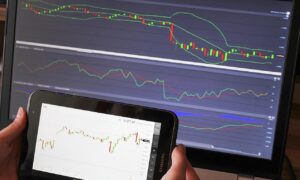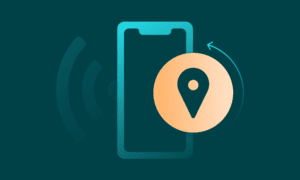Forex trading can be complex, especially for beginners. With constant price fluctuations and endless technical indicators, it’s easy to feel overwhelmed. That’s where forex trading signals come in. These signals are tools that help traders make informed decisions about buying and selling currency pairs. In this guide, we’ll explain exactly what forex trading signals are, how they work, and how to use them effectively in 2025.
What Are Forex Trading Signals?
Forex trading signals are suggestions or alerts that indicate potential trade opportunities in the currency market. These signals typically include details like which currency pair to trade, the direction (buy or sell), entry price, stop-loss level, and take-profit target.
Some signals are generated by experienced human analysts, while others come from automated algorithms based on technical or fundamental data. Traders receive these signals through email, SMS, apps, or directly inside trading platforms.
Why Traders Use Forex Trading Signals
Trading signals simplify decision-making. Instead of spending hours analyzing charts, traders can use signals as guidance or confirmation for their trades. This is especially useful for people who are new to trading or those who don’t have time to monitor the market all day.
By following reliable forex trading signals, traders aim to improve accuracy and consistency. That said, no signal provider is perfect. It’s still up to the trader to manage risk and decide when to act.
How Forex Trading Signals Are Created
Manual Signals from Experts
Manual signals are created by professional traders or analysts who study charts and market conditions. They look at trends, technical indicators, economic news, and other factors to determine when a trading opportunity might appear. These analysts then share their insights in real time with subscribers.
Manual signals can be more adaptive to sudden market events since humans can interpret news and changes that might confuse an automated system.
Automated Signals from Software
Automated signals are generated using algorithms. These systems scan the market using predefined rules and indicators. When certain conditions are met, the software issues a signal. Automation removes emotions from trading and ensures consistency. However, these signals may miss broader market context, especially during volatile periods.
Some traders combine both manual and automated signals to get a more complete picture.
Types of Forex Trading Signals
Entry Signals
An entry signal tells you when to enter a trade. It might suggest buying a currency pair when it breaks above a resistance level or selling when a technical indicator shows overbought conditions.
Exit Signals
Exit signals include stop-loss and take-profit targets. These help you know when to close a trade and lock in profit or limit your loss. Good signal services always include clear exit plans.
Trend Signals
Trend-based signals aim to help you trade in the direction of the market trend. These signals may not appear frequently, but when they do, they often align with higher-probability moves.
Reversal Signals
Reversal signals aim to catch changes in direction. These are more advanced and can be risky, but when accurate, they can catch the beginning of a new trend.
Where to Get Forex Trading Signals
There are many ways to receive forex trading signals in 2025. Some brokers offer signals as part of their platform. Independent providers offer subscriptions via mobile apps or websites. You can also find signal services within trading communities and forums.
Before choosing a source, review its history. Look for real performance results and transparency. Some providers publish verified trade histories, while others only highlight their best wins. Be cautious with any service that promises guaranteed profits.
How to Use Forex Trading Signals Effectively
Understand the Signal Before Acting
Don’t just copy trades without understanding what the signal suggests. Take time to look at the chart and evaluate the logic behind the signal. This builds confidence and helps you learn along the way.
Combine Signals with Your Own Analysis
Even the best forex trading signals can fail. That’s why many traders use signals as a tool, not a rule. If a signal matches your own analysis, that’s a stronger reason to enter the trade.
Stick to a Risk Management Plan
Always apply stop-loss and take-profit levels. Never risk more than you can afford to lose. They can help you find opportunities, but only proper risk management protects your account in the long run.
Track Your Results
Keep a record of all trades you take based on signals. Write down which provider it came from, the result, and what you learned. Over time, this will show you which signals are worth following and which are not.
Pros and Cons of Forex Trading Signals
Benefits
They save time and help remove emotional bias from decisions. They’re especially useful for beginners who want to learn the ropes. For experienced traders, signals can offer trade ideas and support more informed decisions.
Limitations
No signal is perfect. Markets change quickly, and not every suggestion leads to a profit. Some providers send too many signals or lack clear explanations. Others charge high fees without delivering consistent results. That’s why you should treat signals as a tool, not a shortcut.
Are Paid Signals Better Than Free Ones?
Some traders think that paid signals are always more accurate. In truth, both free and paid services can provide value—it depends on the source. Many free signals are basic but useful for learning. Paid signals often come with added features like detailed analysis, support, or higher-frequency updates.
When reviewing providers, don’t focus only on the price. Evaluate their track record, transparency, and community reputation.
What to Look for in the Best Forex Trading Signals
The best forex trading signals are clear, timely, and backed by data. They provide more than just an entry price—they offer a complete trade setup, including stop-loss and take-profit levels.
Reliable signals often come from providers who are open about their methods and offer educational resources. Consistency matters more than occasional big wins.
In 2025, many top-rated signal providers will also integrate AI tools and real-time data feeds. These help increase accuracy, but should still be reviewed by a human before being followed blindly.
Should You Base Your Trading Entirely on Signals?
Trading solely on signals might work in the short term, but long-term success comes from understanding the market yourself. Use signals as part of a broader learning process. Learn what triggers them, study the charts, and ask why the setup works.
Many traders start with signals, then gradually build their own strategies. This way, they use signals as training wheels—not a permanent crutch.
Final Thoughts
Forex trading signals can make trading easier, especially for beginners or those short on time. They offer guidance, reduce analysis stress, and can support better decision-making. Whether you prefer manual analysis or want to explore automation, signals are a useful part of your trading toolkit.
In 2025, traders will have access to more forex trading signals than ever before. But quality still matters more than quantity. Focus on reliable sources, test the suggestions, and manage your risk. When used wisely, signals can support consistent, informed trading.
Want help selecting a signal provider or setting up your first signal-based trade? Let me know, and I’ll walk you through the next steps.



































